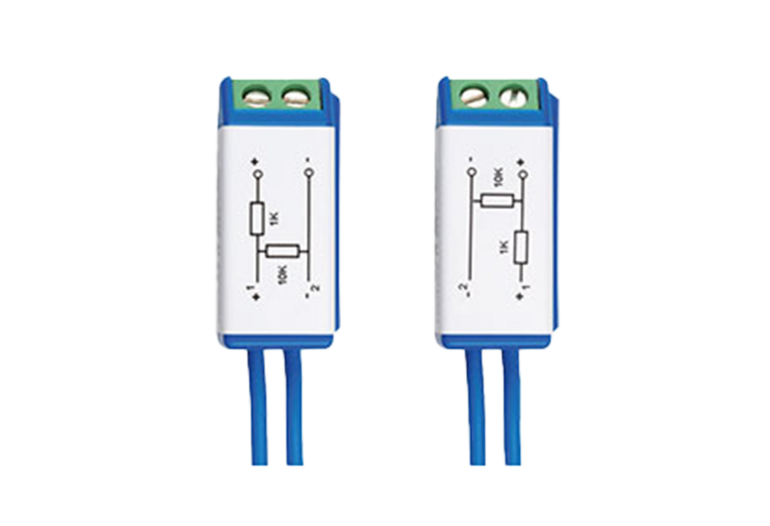
Resistive coupler
Benefits
- Line break/short circuit monitoring
Marking
N/A
Ambient Temperature
-40 °C ≤ Ta ≤ +60 °CDescription
The resistive coupling element is used to monitor open circuits/short circuits on isolation amplifiers that are controlled by mechanical contacts. The resistive coupling element is installed on site directly on the contact to be monitored or in the connection area for it.
Mode of operation
Numerous isolation amplifiers are able to monitor the connected sensor cable for an open circuit and/or short circuit. This is possible because electronic proximity sensors in both an energized and a non-energized state can consume current as defined in EN 60947-5-6. Falling short of or exceeding this value can therefore be clearly assigned to an open circuit or short circuit.
If simple mechanical contacts are used in place of electronic proximity sensors, however, it is not possible to distinguish whether a short circuit is present. The same applies to a line break and an open contact. This can be remedied by a combination of resistors at the end of the sensor cable directly before the switch. This ensures quiescent current in the cable also in the event of an open contact or to a limited extent with a closed contact, keeping the current at a value significantly below the response threshold for a short circuit.
Four different statuses can be detected: open circuit, switch
open, switch closed, short circuit.
The resistive coupling element may be used with all isolation amplifiers with open circuit and short circuit monitoring, such as from BARTEC, CEAG, Hartmann & Braun, Pepperl + Fuchs
Technical Data
| Power | 0.5 W up to T5/0.2 W for T6 (up to Tu = +50 °C)/0.1 W for T6 (up to Tu = +60 °C) |
|---|---|
| Resistance | See order details |
| Connection | 1,5 mm² |